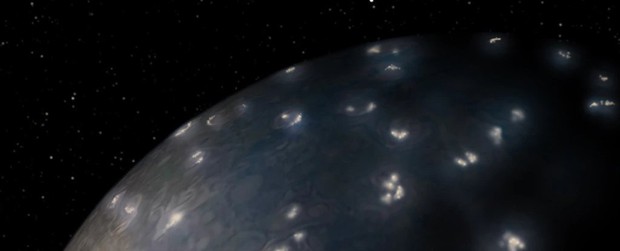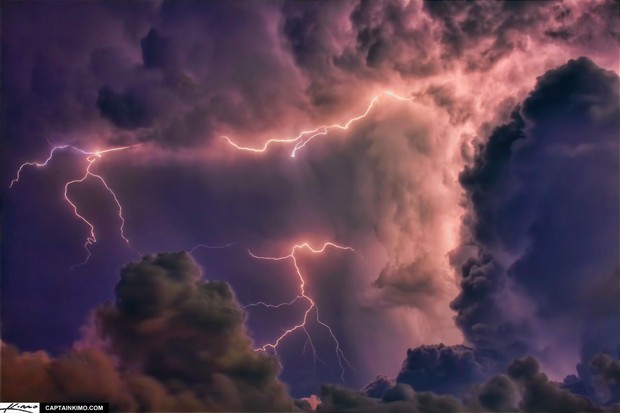What is strange about thunderstorms? Why are they considered mysteries? Everything will be answered shortly.
In the solar system, Jupiter is the largest planet. Although it is only a globe of gas, its mass is equal to the sum of all the other planets in the solar system combined.
However, Jupiter is not only famous for its size, but also for its climates known to be hysterical. The planet’s atmosphere has wind speeds of up to 360 km / h, can form a storm in hours, and sweep an area thousands of kilometers in diameter overnight. Lightning is particularly accompanied by lightning, which flashes an area.
The problem is that thunderstorms on Jupiter have always been considered a mystery, because the frequency they emit is inaccessible.
Flashes on Jupiter
“No matter what planet you are on, thunder always emits radio waves during lightning” – Shannon Brown, NASA expert said.
“But until now, lightning on Jupiter has always been unrecognizable, because our spaceships are only equipped with radios with the kilohertz frequency band.”
And now all the mysteries have been solved, thanks to the Juno probe launched in 2011. Juno has captured the radio signal emanating from Jupiter’s lightning, and it falls into the megahertz threshold frequency (1 megahertz = 1000 kilohertz). The study is published in 2 different reports.
“Through eight encounters, Juno has identified up to 377 lightning explosions on Jupiter.” – Brown, shares the study’s first author.
“They emit frequencies at megahertz, even gigahertz (1000 megahertz). The reason we have confirmed this is probably because Juno is approaching Jupiter at the closest distance ever seen.”
Wherever it is the thunder must radiate radio waves
In short, there was thunder on Jupiter – this was officially confirmed by Juno. However, it doesn’t look like Earth at all. Jupiter’s thunder often clumps around two poles, Brown says, and there is no equatorial lightning. On Earth, things are the opposite.
According to the expert group, the cause may lie in the temperature. On Earth, the equator is the place that receives the most heat from the Sun. This is why the climate around the equator is generally hot and humid, and there are many storms.
As for Jupiter, the distance between him and the Sun is 5 times greater than that of the Earth, so the heat obtained is also lower. The heat level in the atmosphere will be uniform, except for 2 poles. As a result, hot air collects on 2 poles, creating terrible storms in these areas.
In the second study, the experts again noticed a similarity between Earth and Jupiter. After comparing data from Juno and Voyager 1, they found that the maximum density of lightning on Jupiter is 4 times / s, which is roughly the same as on Earth.
“These results allow us to better understand Jupiter’s climate: composition, convection and energy flow,” says Brown.
The research is published in the journals Nature and Nature Astronomy.




